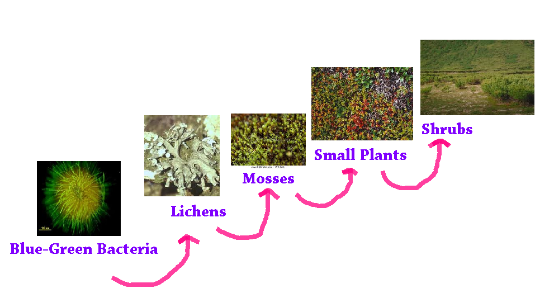Soil Profile The tundra's soil is wet and soggy. The soil stays soggy because the cold temperatures do not permit evaporation. There also is very little nutrients in the soil due to the cold weather and the permafrost. The freezing and thawing of the soil causes the landscape to form.  |
Succession Through succession, patches of mineral soil are created. Successional changes come from mainly rock outcrops, bodies of water, and beach ridges. The changes were very temperature dependent, such processes are leaching of salt, productivity, and decomposition. Salt leaching stops the invasion of different species, productivity helps with the establishment of seedlings, and decomposition improves the nutrients. Also due the cold temperatures, nothing else can change the succession, so the tundra remains in stability. The difference between primary and secondary succession is that primary succession is the growth of plants and trees when no life exists, while secondary succession begins when life already exists, but there is regrowth. Primary: After a glacier has retreated, primary succession occurs. Secondary: After a tundra fire, but they are often rare. |